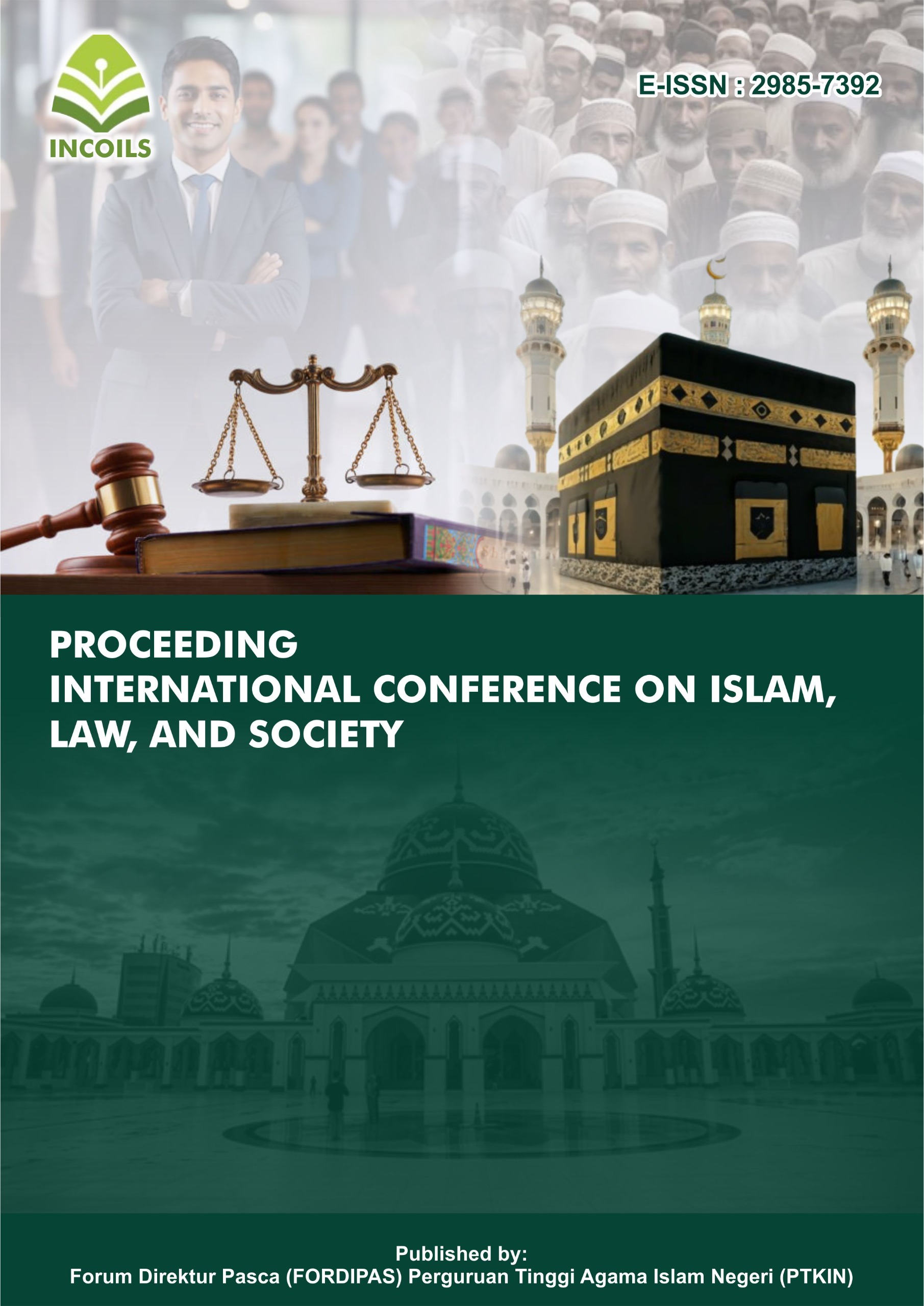Differences between the 2013 Curriculum and the Independent Curriculum On Islamic Religious Education at Madrasah Ibtidaiyah
DOI:
https://doi.org/10.70062/incoils.v3i1.157Keywords:
Curriculum 2013, Independent Curriculum, Madrasah Ibtida'iyah.Abstract
The Islamic Religious Education Curriculum the Covid-19 pandemic, which previously referred to the Decree of the Minister of Religion (KMA) Number 183 of 2019 concerning the PAI and Arabic Language Curriculum in Madrasas, now becomes the Directorate General of Education Decree No. 3211 concerning PAI and Arabic Learning Achievements. This research aims to analyze the differences between the 2013 curriculum and the independent curriculum in Islamic religious education, especially at the madrasah ibtidaiyah level. This research uses qualitative methods with a literature study approach. Data collection uses documentation. Data analysis used content analysis. The results showed that there had been several changes from the 2013 curriculum to the independent curriculum in Islamic religious education. There were differences in terms of objectives, characteristics, and editorial changes starting from aspects that changed to elements, core competencies changed to learning outcomes that were integrated into Profile of Pancasila student Rahmatal Lil Alamin. Basic competencies are the lesson objectives. The syllabus becomes the flow of learning objectives. RPP becomes a teaching module. Assessments are diagnostic, formative, and summative assessments. In preparing the flow, the flow is almost the same, only there are editorial changes. If the 2013 curriculum it starts with identifying core competencies, and basic competencies and then compiling the syllabus and lesson plans, then in the independent curriculum the flow starts with analyzing learning outcomes, and new learning objectives, developing a flow of learning objectives and teaching modules.
References
Adlini, Miza Nina, Anisya Hanifa Dinda, Sarah Yulinda Octavia Chotimah, and Sauda Julia Merliyana. 2022. “Metode Penelitian Kualitatif Studi Pustaka”. Edumaspul: Jurnal Pendidikan 6 (1), 974-980. https://doi.org/10.33487/edumaspul.v6i1.3394
Anas Anas, Akhmad Zaenul Ibad, Nova Khairul Anam, and Fitri Hariwahyuni. 2023. “IMPLEMENTASI KURIKULUM MERDEKA MADRASAH IBTIDAIYAH (MI) (Studi Analisis Kebijakan KMA RI No. 347 Tahun 2022)”. Journal of Creative Student Research 1 (1):99-116. https://doi.org/10.55606/jcsrpolitama.v1i1.1043.
Kemenag. 2019. “Keputusan Drijen Pendis Nomor 3211 Tahun 2022 tentang capaian pembelajaran PAI dan Bahasa Arab Kurikulum Merdeka pada madrasah” dalam https://infonanggroe.com/wp-content/uploads/2020/08/KMA_NOMOR_183_TAHUN_2019_PAI_DAN_BAHASA_ARAB_KAMI_MADRASAH_BLOGSPOT.pdf
Kemenag. 2022. “KMA Nomor 183 Tahun 2019 tentang Kurikulum PAI dan Bahasa Arab di Madrasah” dalam https://drive.google.com/file/d/1cd7j71sRwj443mB223grmd9DDwWyGU8m/view
Nirwana, Rina, and Qolbi Khoiri. 2023. “Kebijakan Kurikulum Pendidikan Islam Pada Satuan Pendidikan Dasar, Menengah Dan Tinggi”. Journal on Education 5 (2), 5266-78. https://doi.org/10.31004/joe.v5i2.1266.
Pratycia, Angel. Arya Dharma. Putra, Aulia Ghina Maharani Salsabila, Febri Ilhami Adha, Ahmad Fuadin. 2023. “Analisis Perbedaan Kurikulum 2013 dengan Kurikulum Merdeka”. Jurnal Pendidikan Sains dan Komputer 3 (1), 58-64. https://doi.org/10.47709/jpsk.v3i01.1974
Sari, Milya. & Asmendri, 2020. “Penelitian Kepustakaan (Library Research) dalam Penelitian Pendidikan IPA”. Natura Science: Jurnal penelitian Bidang IPA dan Pendidikan IPA 6 (1), 41-53. https://doi.org/10.15548/nsc.v6i1.1555
Utomo, Sigit Tri, & Ifadah, L. 2020. “Inovasi Kurikulum Dalam Dimensi Tahapan Pengembangan Kurikulum Pendidikan Agama Islam”. JRTIE: Journal of Research and Thought of Islamic Education 3 (1), 19-38. https://doi.org/10.24260/jrtie.v3i1.1570
Zakariyah, Zakariyah, Muhamad Arif, and Nurotul Faidah. 2022. “ANALISIS MODEL KURIKULUM PENDIDIKAN AGAMA ISLAM DI ABAD 21”. AT-TA’DIB: JURNAL ILMIAH PRODI PENDIDIKAN AGAMA ISLAM 14 (1), 1-13. https://doi.org/10.47498/tadib.v14i1.964.
Idayanti, Selly. 2023. “ANALISIS KESESUAIAN P5P2RA DENGAN PRINSIP PELAKSANAAN DAN DAMPAKNYA TERHADAP PERILAKU PESERTA DIDIK”. Wawasan: Jurnal Kediklatan Balai Diklat Keagamaan Jakarta 4 (1):48-66. https://doi.org/10.53800/wawasan.v4i1.228.
Mufid, Muchamad. 2023. “Penguatan Moderasi Beragama dalam Proyek Profil Pelajar Rahmatan Lil ‘Alamin Kurikulum Merdeka Madrasah”. QuranicEdu: Journal of Islamic Education2 (2), 141–154. https://doi.org/10.37252/quranicedu.v2i2.396
Wijayanti, inggit, and Intan Nur Ngazizah. 2023. “Kesıapan Madrasah Mengımplementasıkan Kurıkulum Merdeka Di MIN 2 Bantul”. Jurnal Elementaria Edukasia 6 (2):384-97. https://doi.org/10.31949/jee.v6i2.5403.
Nurmaliyah, Yayah, Syamsul Aripin, and Nana Meily Nurdiansyah. 2023. “2013 Curriculum: Implementation of Islamic Religious Education Learning in Schools for Children With Special Needs”. International Journal of Islamic Thought and Humanities 2 (1):124-38. https://doi.org/10.54298/ijith.v2i1.83.
Yuniasari, Fenni, Nur Laili Komairatul Fitria, and Afiful Ikhwan. 2023. “Learning Islamic Education in the Independent Curriculum : (a Case Study of Authentic Assessment at Madrasah Ibtidaiyah Nurul Hidayah)”. EDUKASI : Jurnal Pendidikan Islam (e-Journal) 11 (2):306-23. https://doi.org/10.54956/edukasi.v11i2.402.
Downloads
Published
How to Cite
Issue
Section
License

This work is licensed under a Creative Commons Attribution-ShareAlike 4.0 International License.







